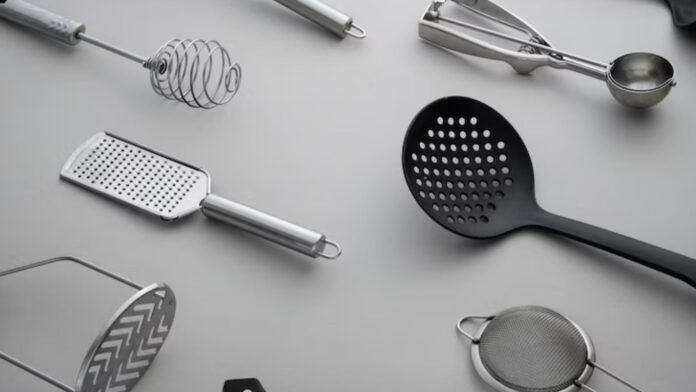It takes some skill to maintain balance in a professional kitchen. It is often a real juggling act to make sure that each dish which leaves the kitchen is of the greatest quality. Whilst simultaneously guaranteeing that the back-of-house procedures are effective. Commercial kitchens are on a tightrope with great anxieties of falling. What with the obstacle of food waste and also the waiting period for newly plated food. But with the correct modern equipment modifications, those cooks can assure that their creations exceed the highest standards. While enhancing operations without compromising the quality and safety of the food.
If you need some high-quality kitchen equipment then get in contact with a professional catering equipment suppliers. Most commercial kitchens are seeking ways to save energy costs, lower their carbon footprints. And develop more ecological kitchens in addition to lowering waste and improving worker productivity. It’s hardly surprising that more restaurants and corporate kitchens are implementing energy-saving kitchen renovations to increase productivity and save labour expenses.
Streamline Your Commercial Kitchen’s Operations:
Interestingly, even with the best cuisine and top-notch service, your company may still not achieve its ROI (return on investment) goals. What many people overlook is that your commercial kitchen equipment procedures are what will make the most difference in your bottom line. Since it can save labour costs, raise food safety. And speed up a procedure that decreases food waste. Enhancing operations could have a big impact on your bottom line.
You can start by making some logical improvements to operations. Start by paying attention to the opinions of your staff, watching how the kitchen is run. And even refining your menu. Nevertheless, several quick fixes won’t take months to apply to increase the effectiveness of your commercial kitchen. Simple equipment changes may enhance operations while also raising the calibre of the food. You may improve operations by investing in more advanced technology. When you modernise your corporate kitchen equipment.
Any form of the company may find it incredibly difficult to adopt new technology. Nevertheless, modern commercial kitchen technology can improve food quality. And increase labour productivity—two benefits that are unquestionably worth the danger. In addition to reducing food waste. Replacing outdated industrial stoves or refrigeration modern equipment with updated models will use less energy. And increase flavour and quality.
Better Food Quality is Served by Energy Efficiency:
The quality of your meals naturally begins to decline as your industrial kitchen’s modern equipment gets older. You might anticipate higher energy costs as well as increased food deterioration. Bottom line: food quality suffers if your kitchen appliances are not energy-efficient. Today are many different energy-efficient items on the market that guarantee food remains fresher for longer as technology is developing at a rapid rate. The cost of upgrading your gear to one of these energy-saving and lead to eco-friendly living models doesn’t have to be high; however, it will undoubtedly pay off in the long run.
Lower Labour Costs and Speed up the Process:
Older kitchen’s modern equipment would inevitably start to operate more slowly, which will increase labour expenses, lengthen wait times, and ultimately aggravate the workforce. Ineffective equipment could also compromise food safety and impede productivity, increasing labour costs.
Observe A Pattern?
The first place to look for an accelerated procedure which enhances operations in your corporate kitchen while cutting labour expenses is your gear. Start with tools and appliances which exhibit clear signs of wear and tear. Everything rusty or covered in a layer of grease and filth poses a risk to food safety. Now turn your attention to the modern equipment in your business kitchen which has often been repaired. It can vary from anything minor, like a prep station which falls apart, to something larger, like industrial ranges that are always breaking down.
In a Commercial Kitchen, Efficiency:
Examining the entire process—from beginning to end—is the true first step in streamlining procedures. And establishing a corporate kitchen that functions like an efficient machine. Occasionally anything in your staff’s workflow slows them down since it uses power instead of saving it. Your energy expenses may be impacted as a result of the additional gas. And electricity used to produce the meal on inefficient machinery. Alternately, the modern equipment can’t operate rapidly enough to produce. And cook meals at its best rate since the menu isn’t simplified. In some cases, some minor problems combine to make a corporate kitchen inefficient.
For instance, unreliable cartwheels, burnt-out lights. And unclean condenser coils could all work together to reduce productivity. The method of preparing, cooking, and serving food could be streamlined. And accelerated by modernizing your industrial kitchen with energy-saving technology. Due to the absence of rust fragments that might or might not end up in someone’s food, the danger to food safety is reduced. By enabling your workers to quickly prepare food items without sacrificing the quality of food, also lowers labour costs. Additionally, modernising even minor items of modern equipment may help you save money over time. And decrease food waste by keeping food fresher for longer durations of time.
Final Words:
Every piece of gear can be keep healthy by routine care and upkeep. Ensuring that it has a long lifespan and performs well for the duration of its useful life. Additionally, upkeep serves as a safeguard from possible kitchen mishaps. And issues with food standards brought on by unkept kitchen’s modern equipment.



